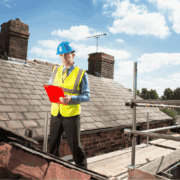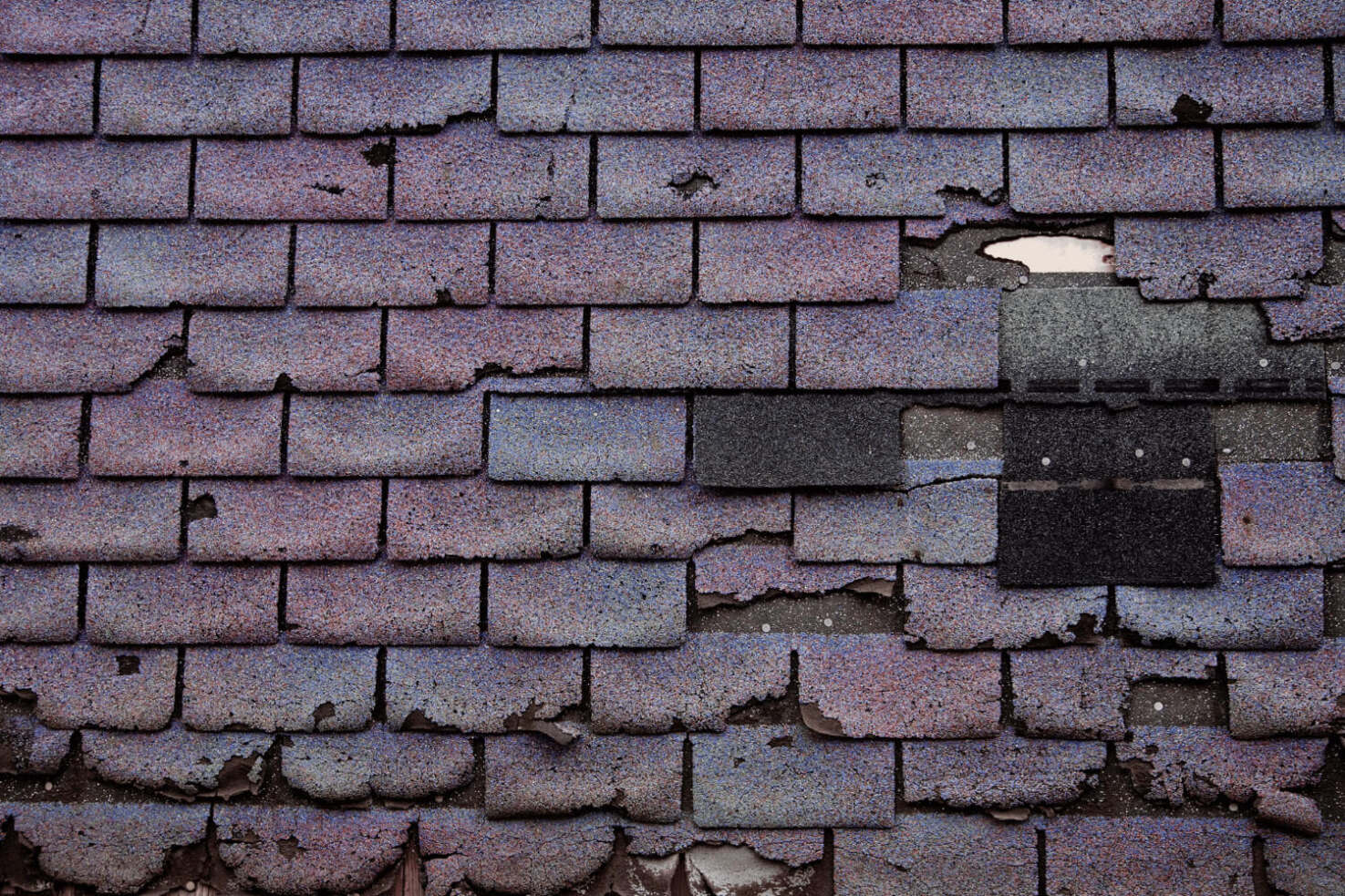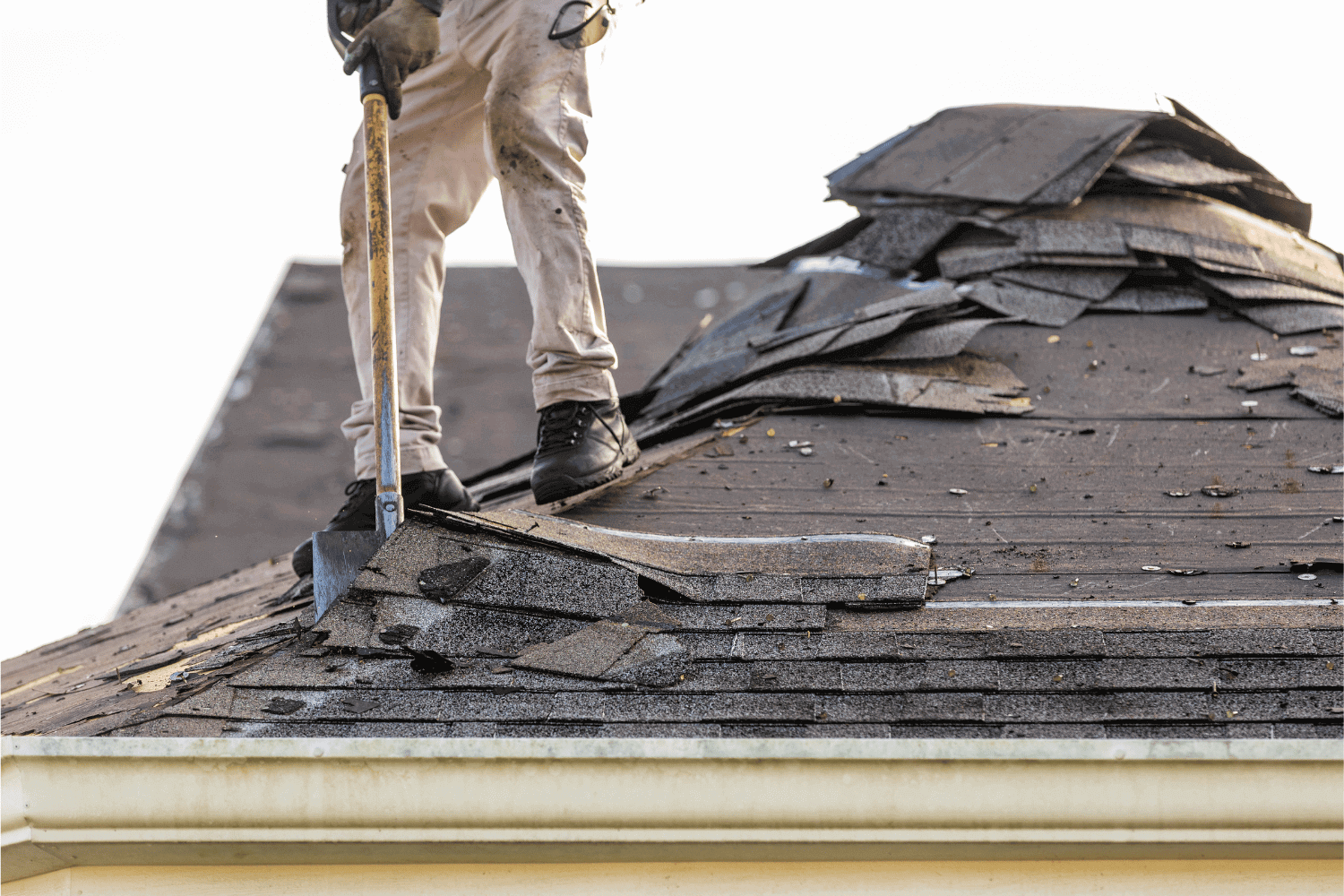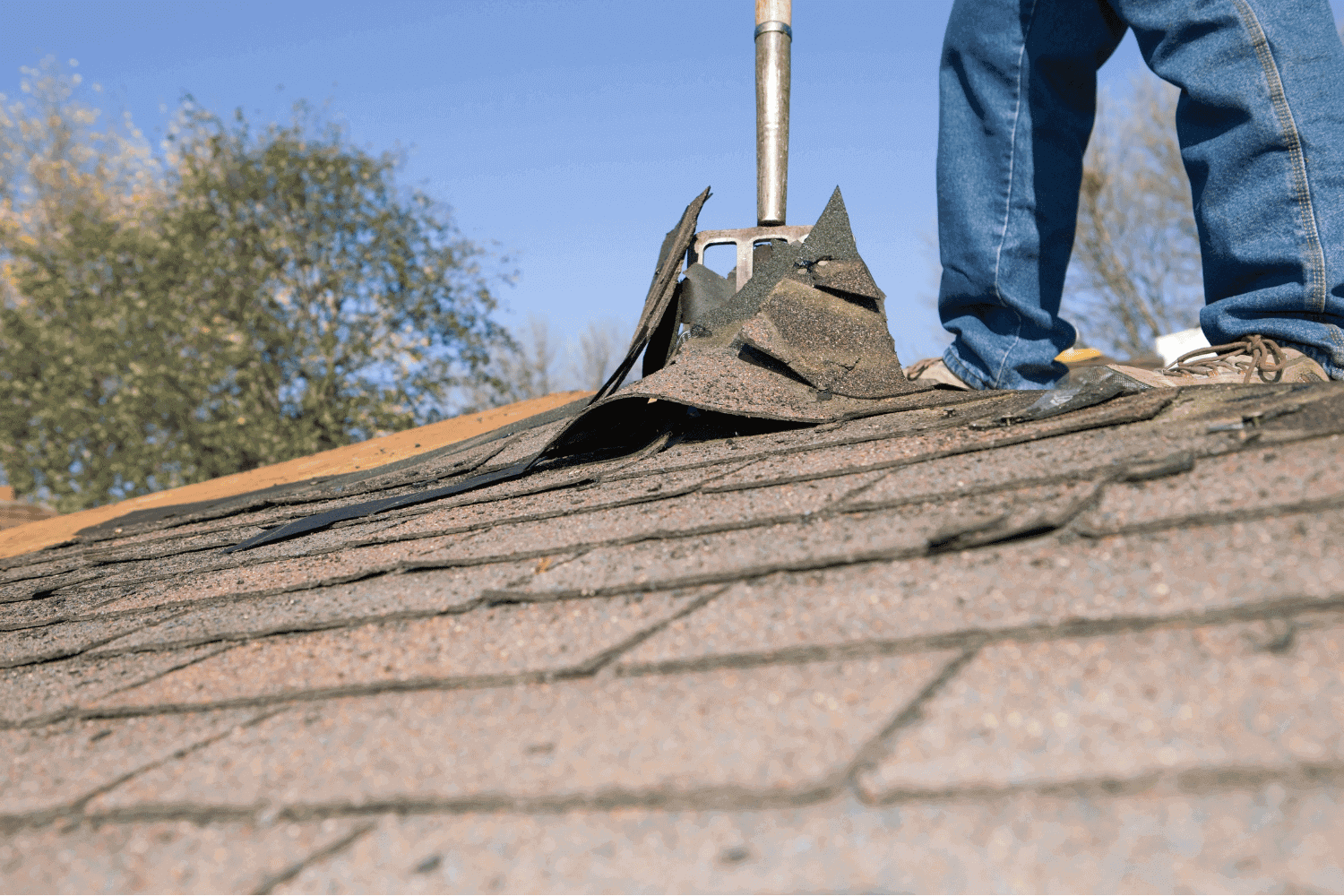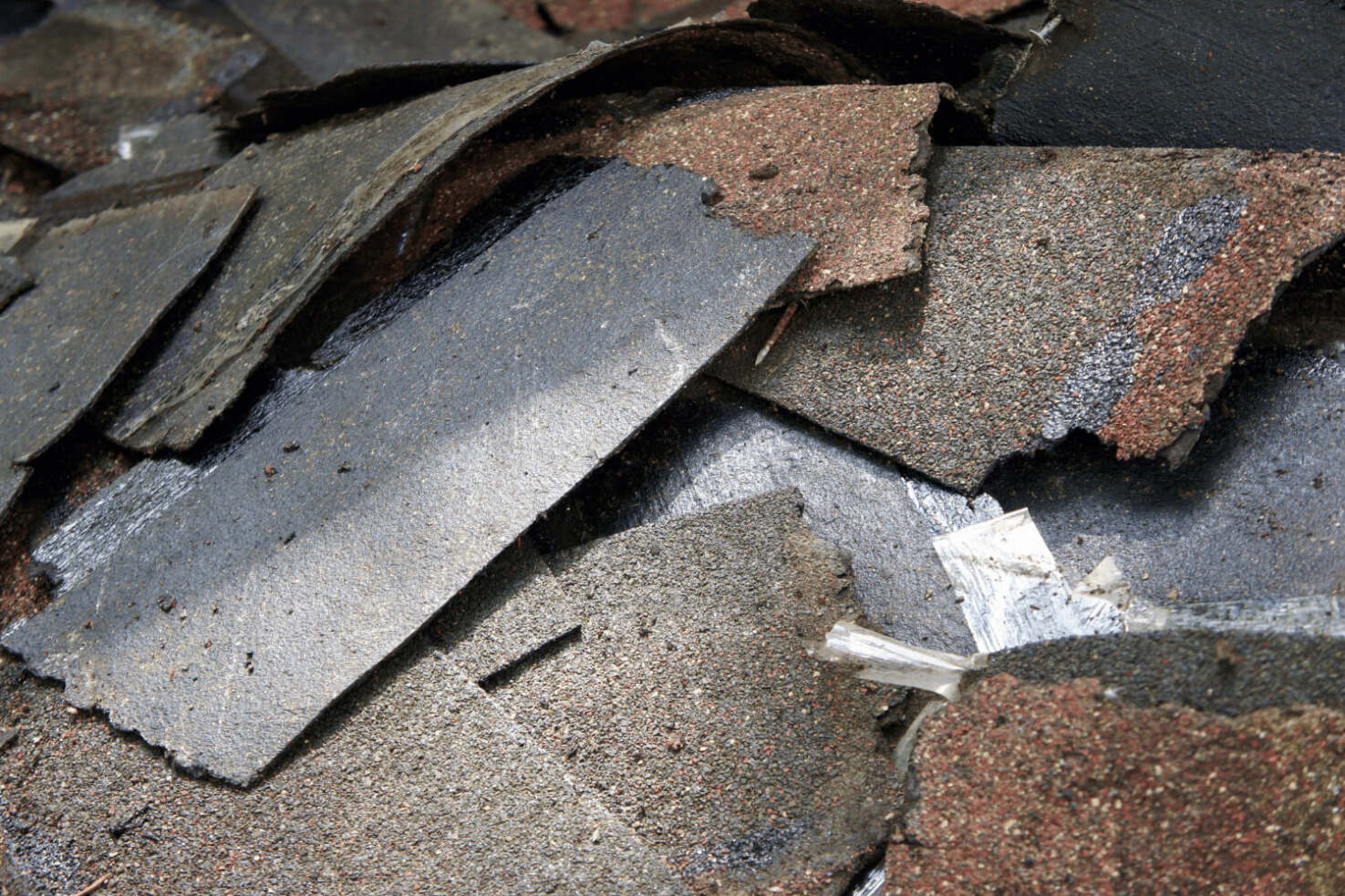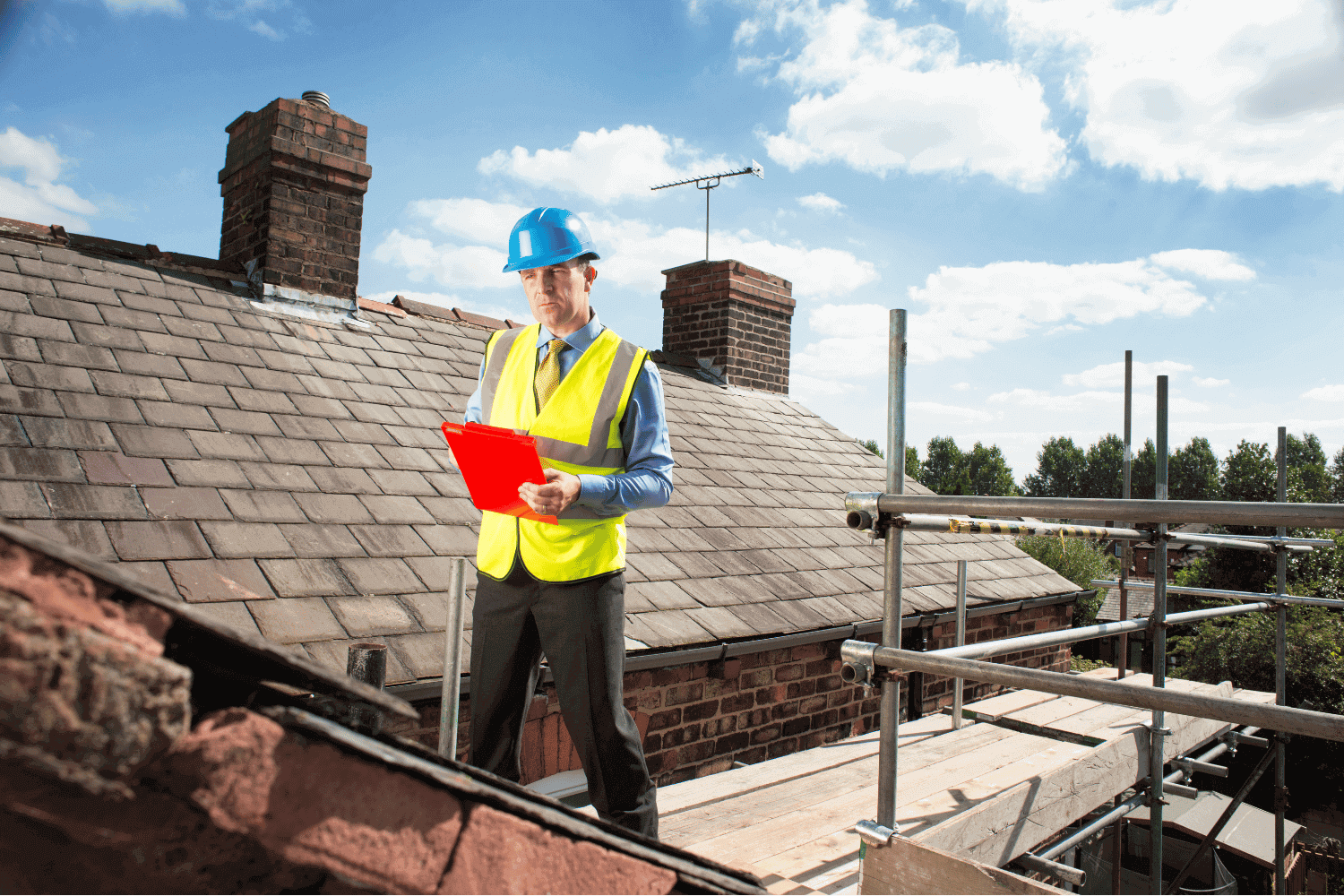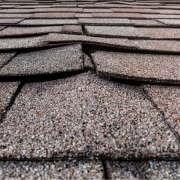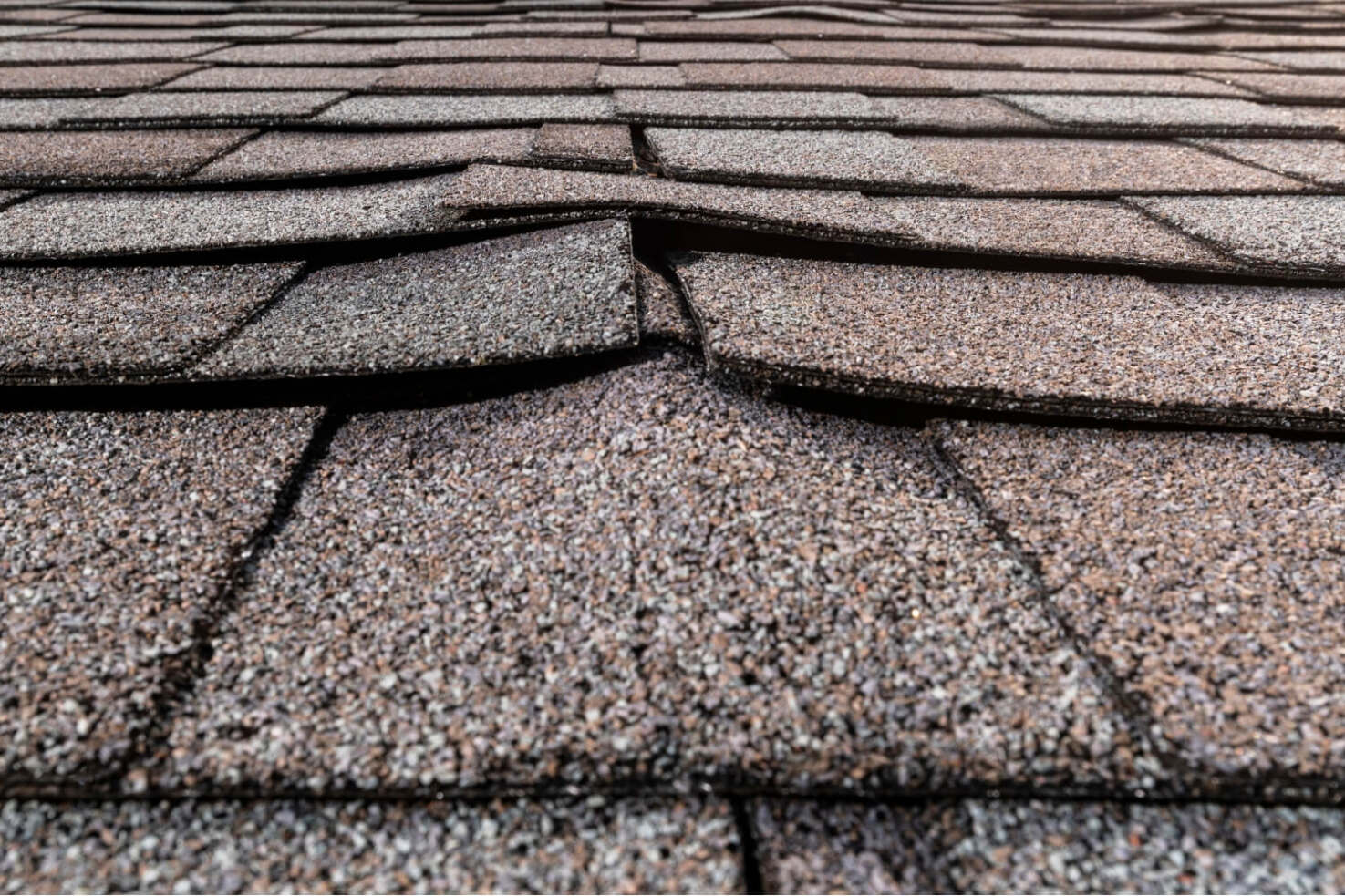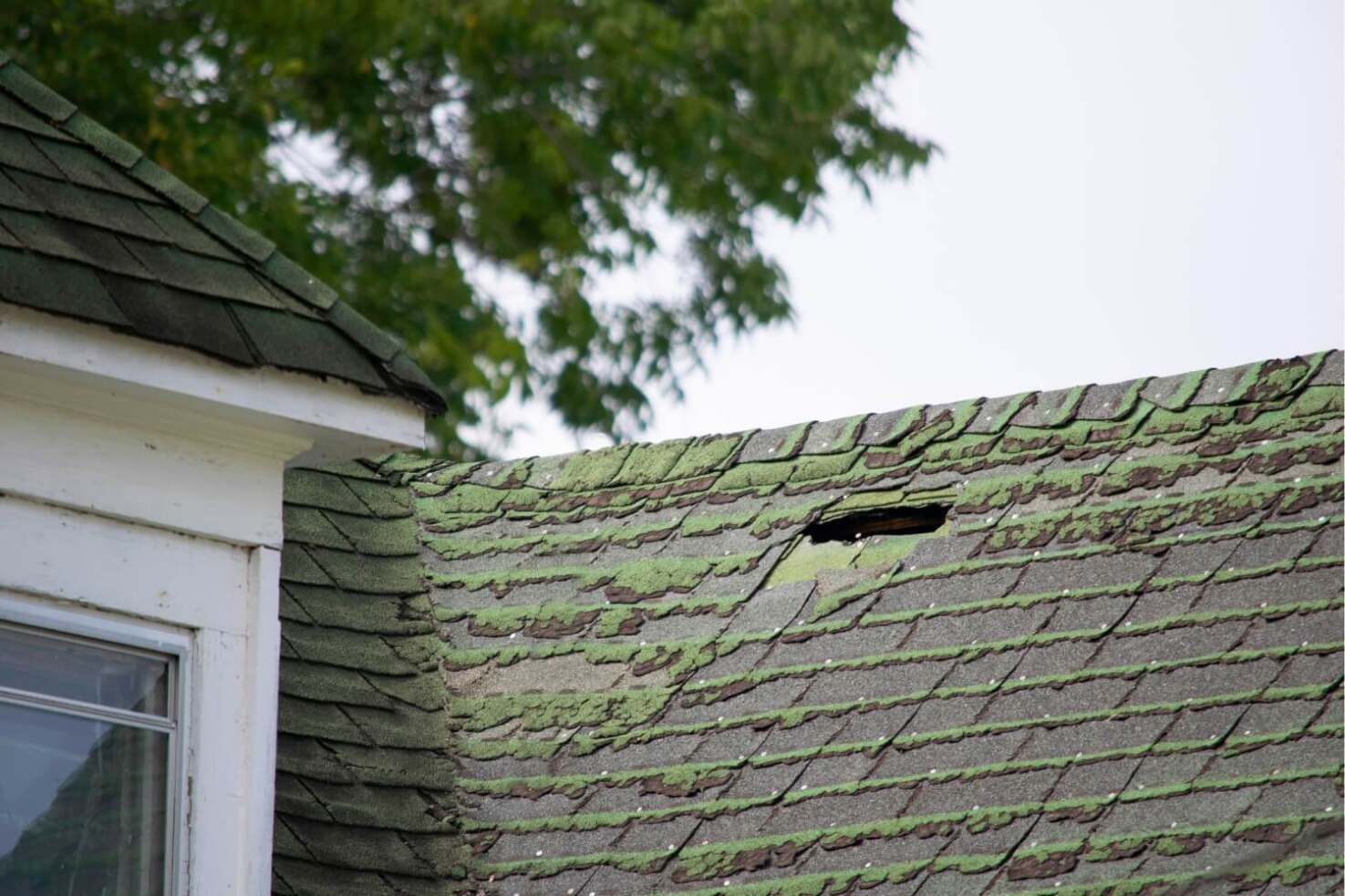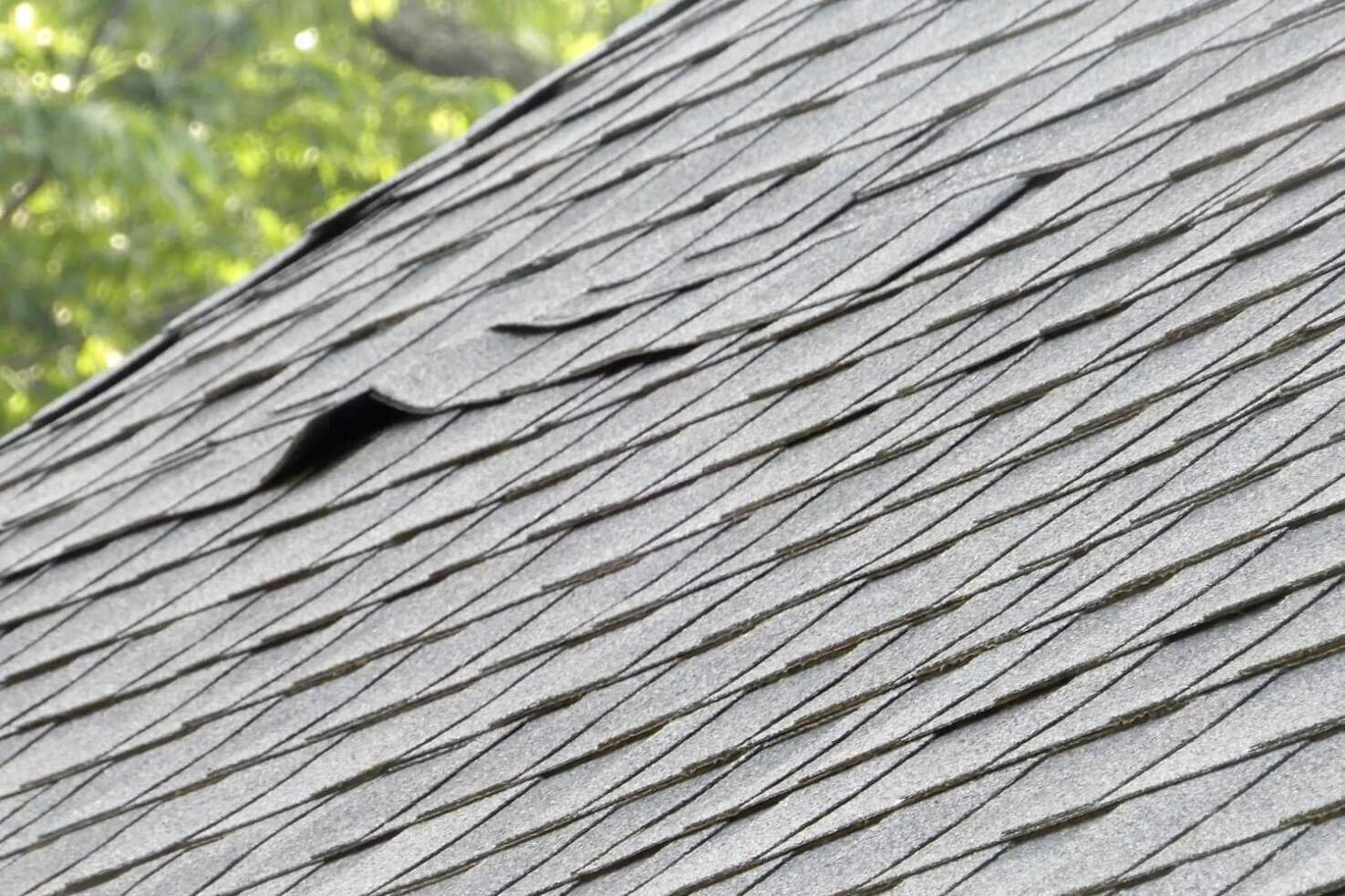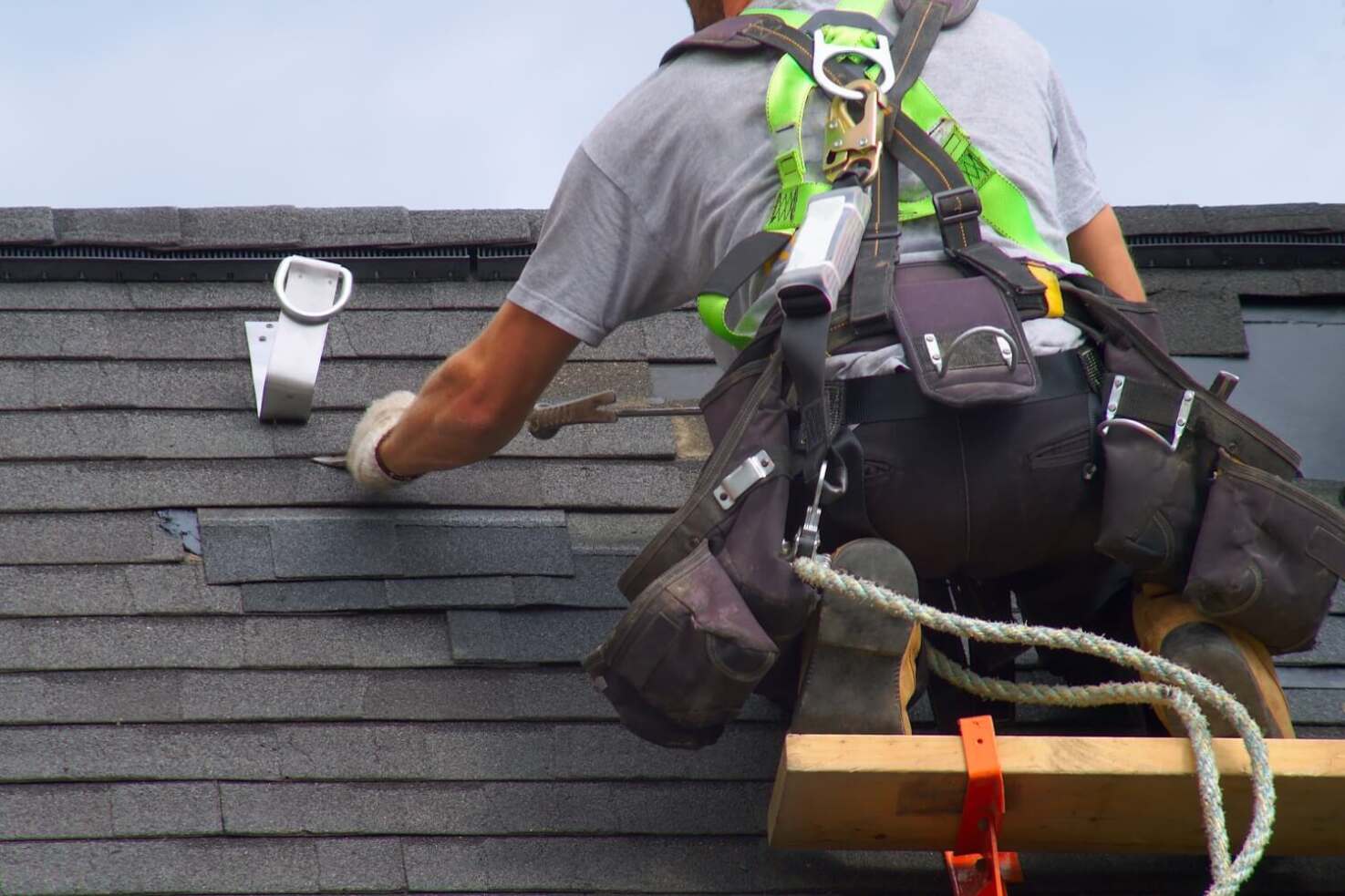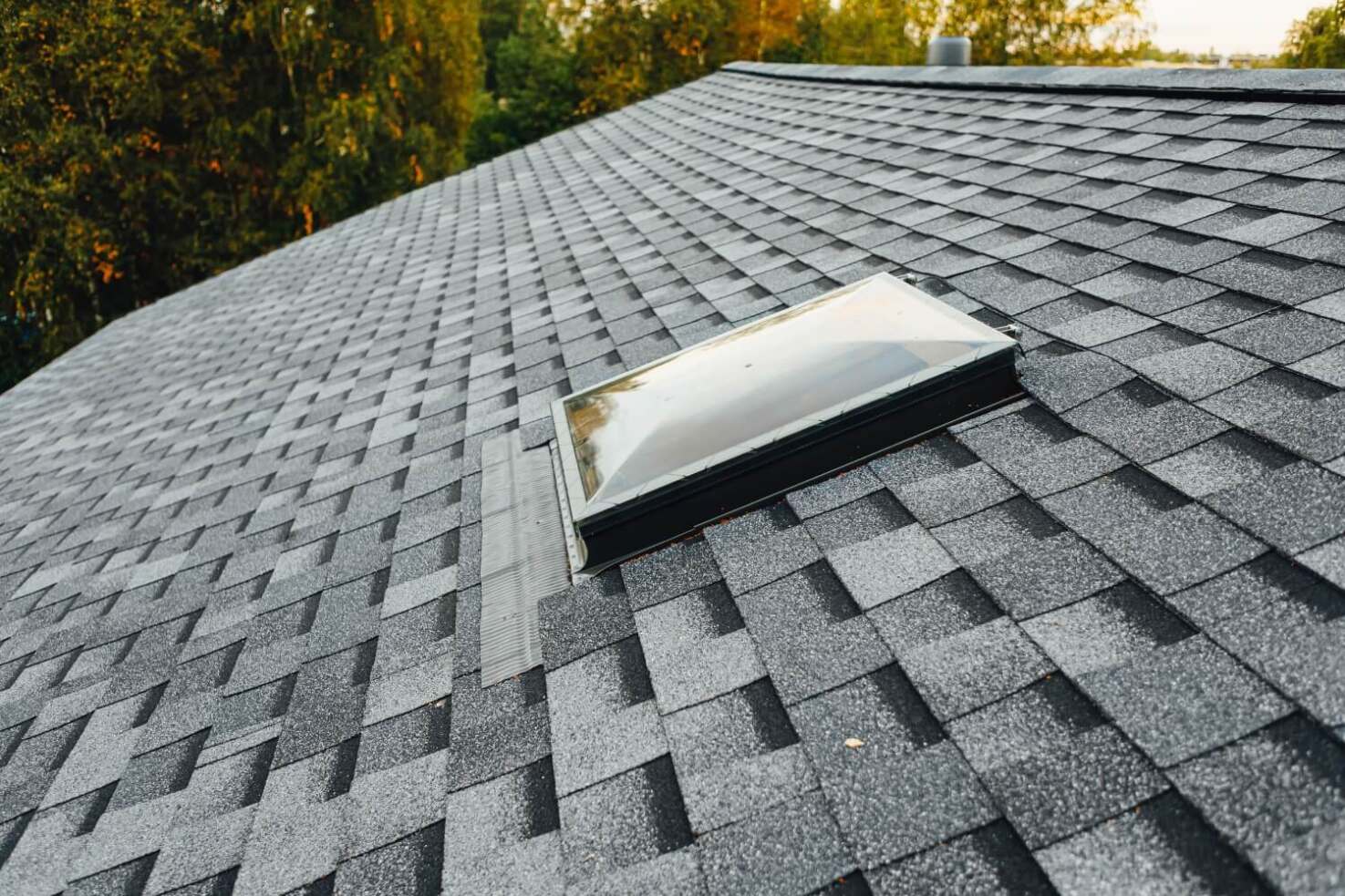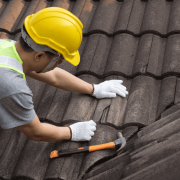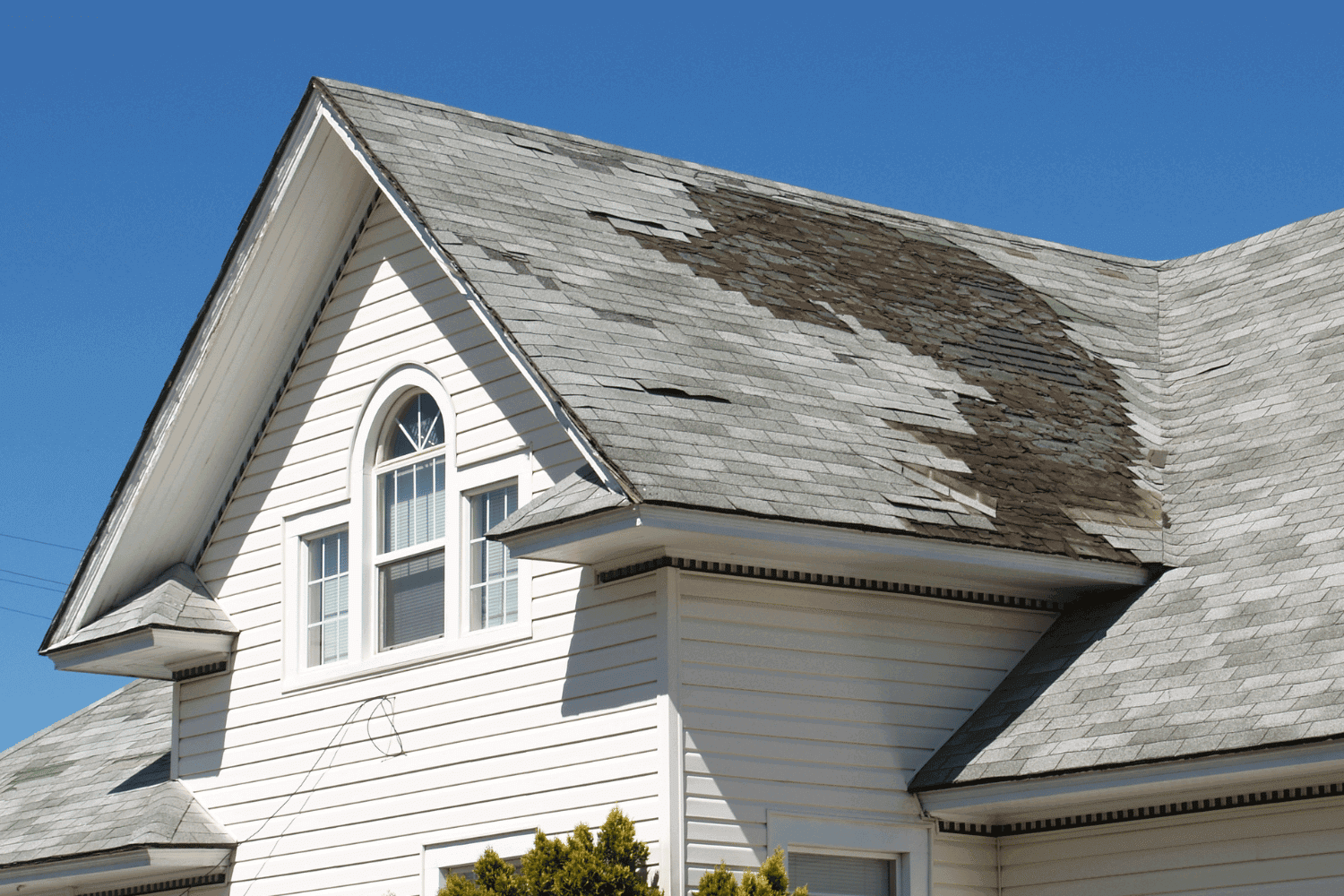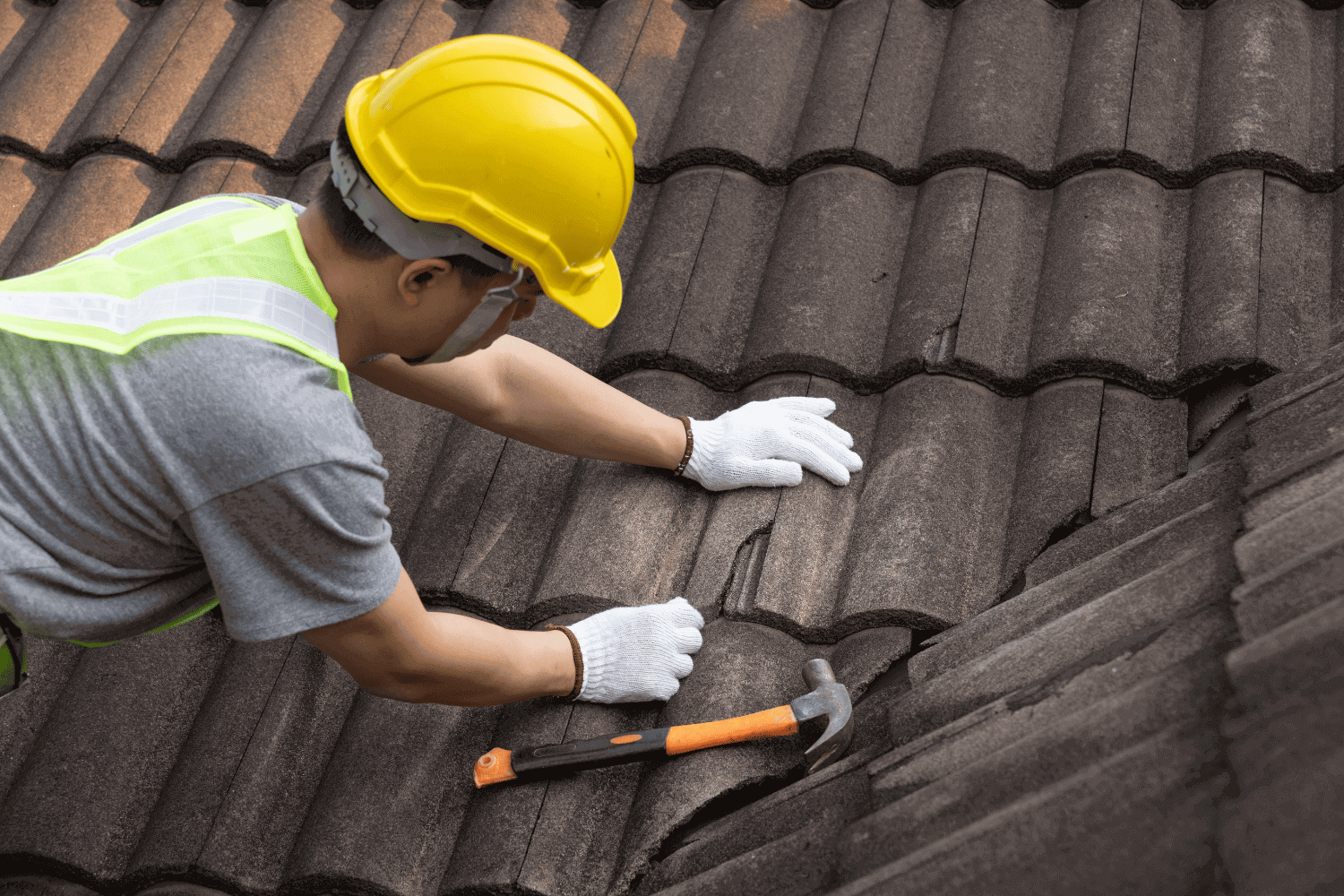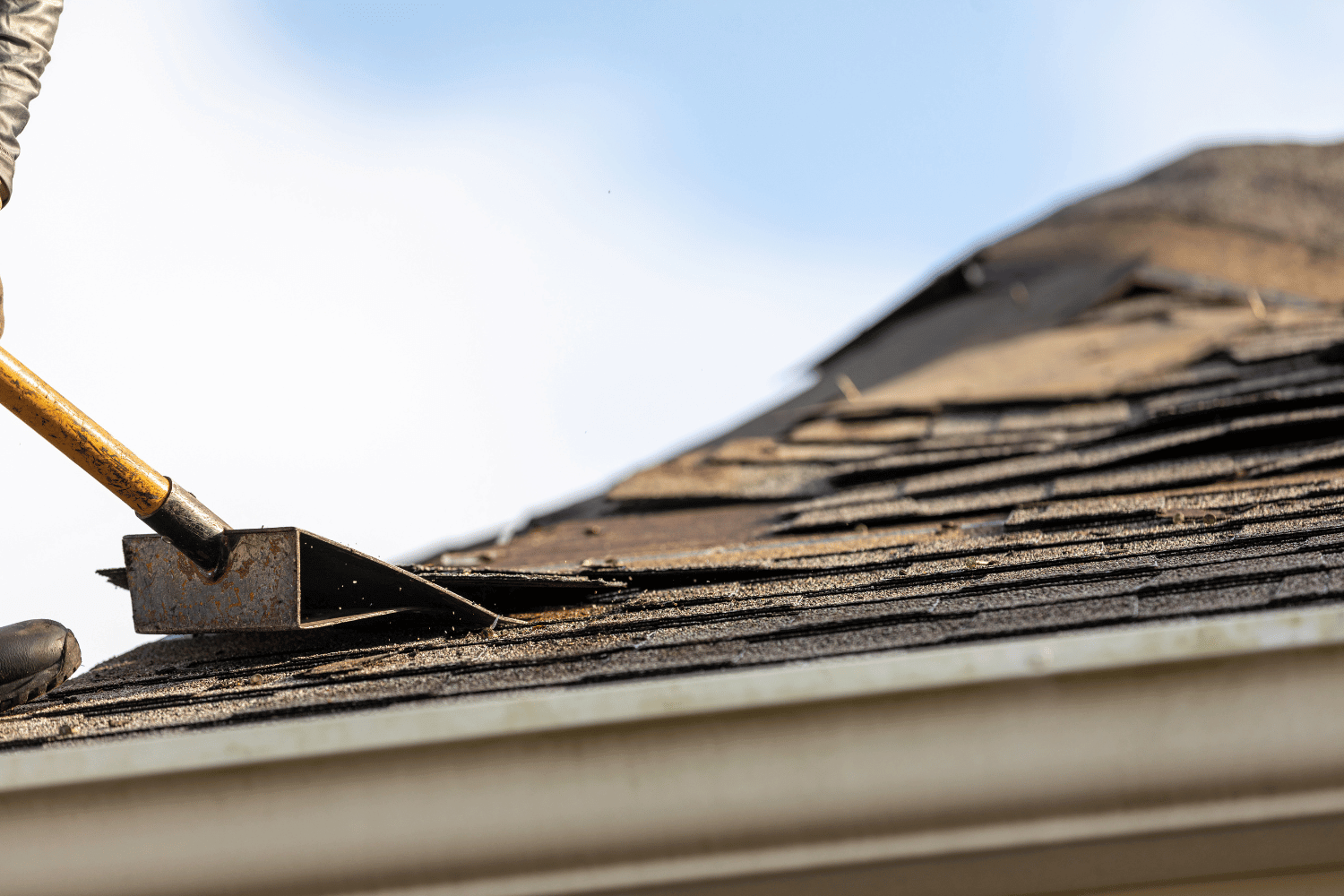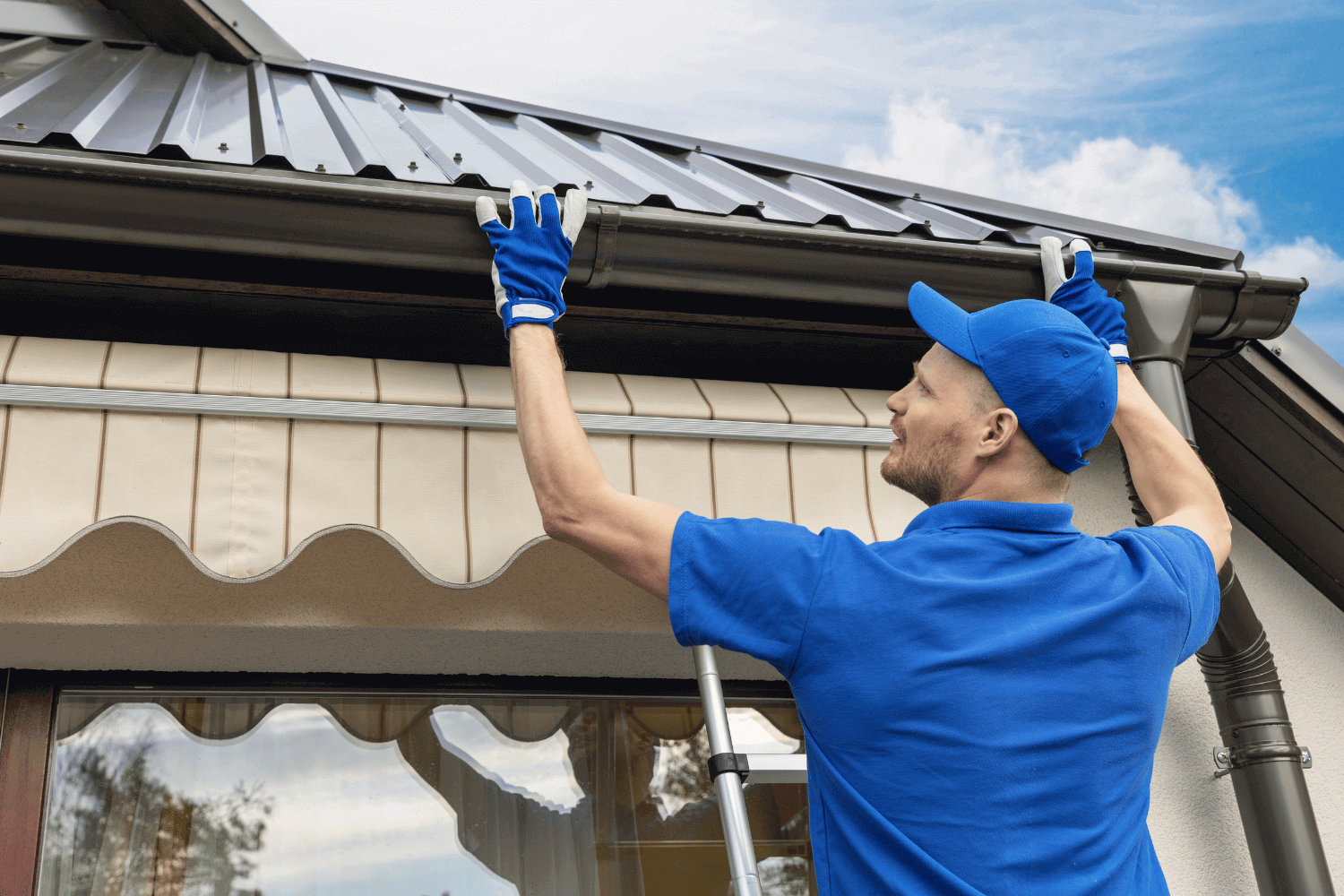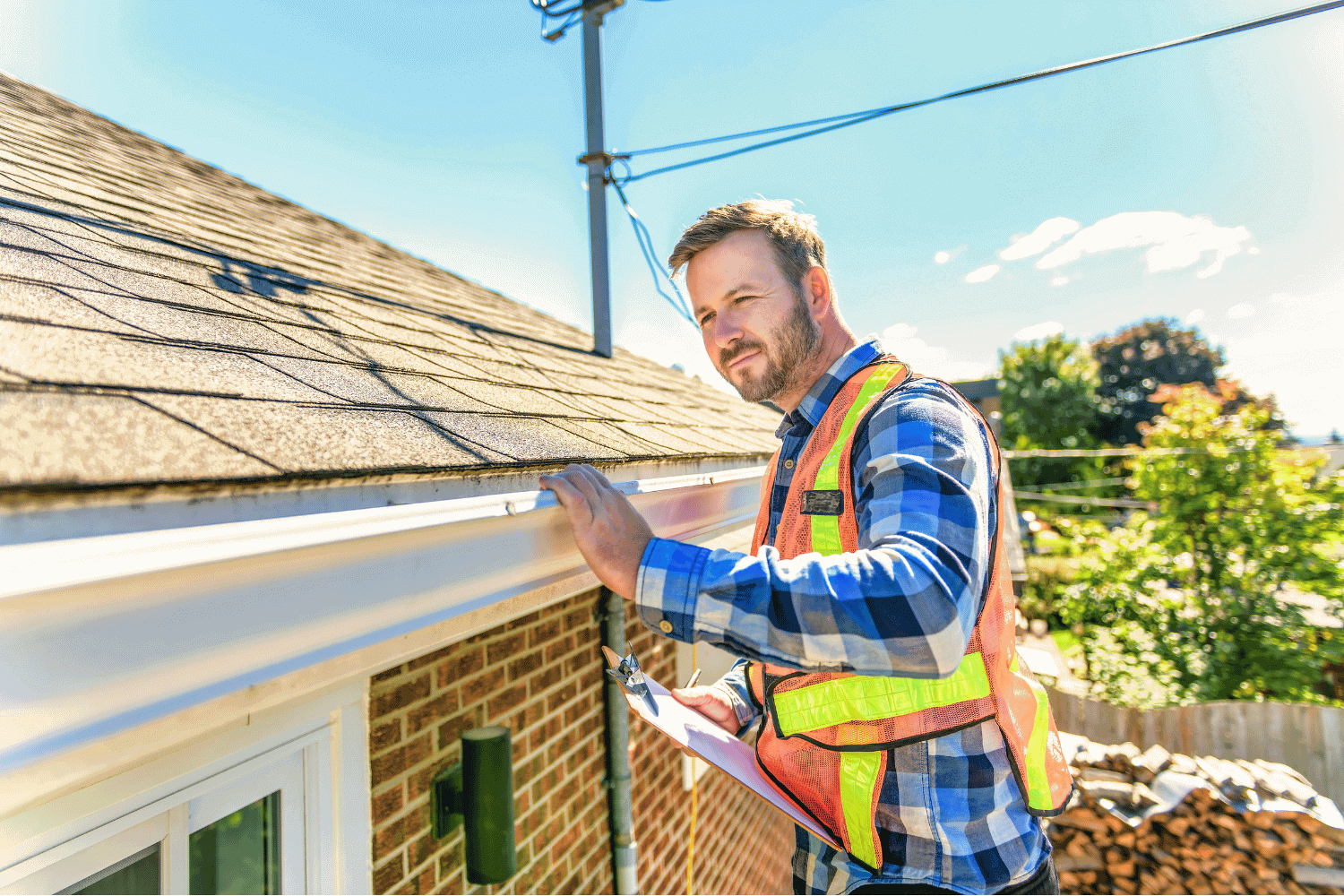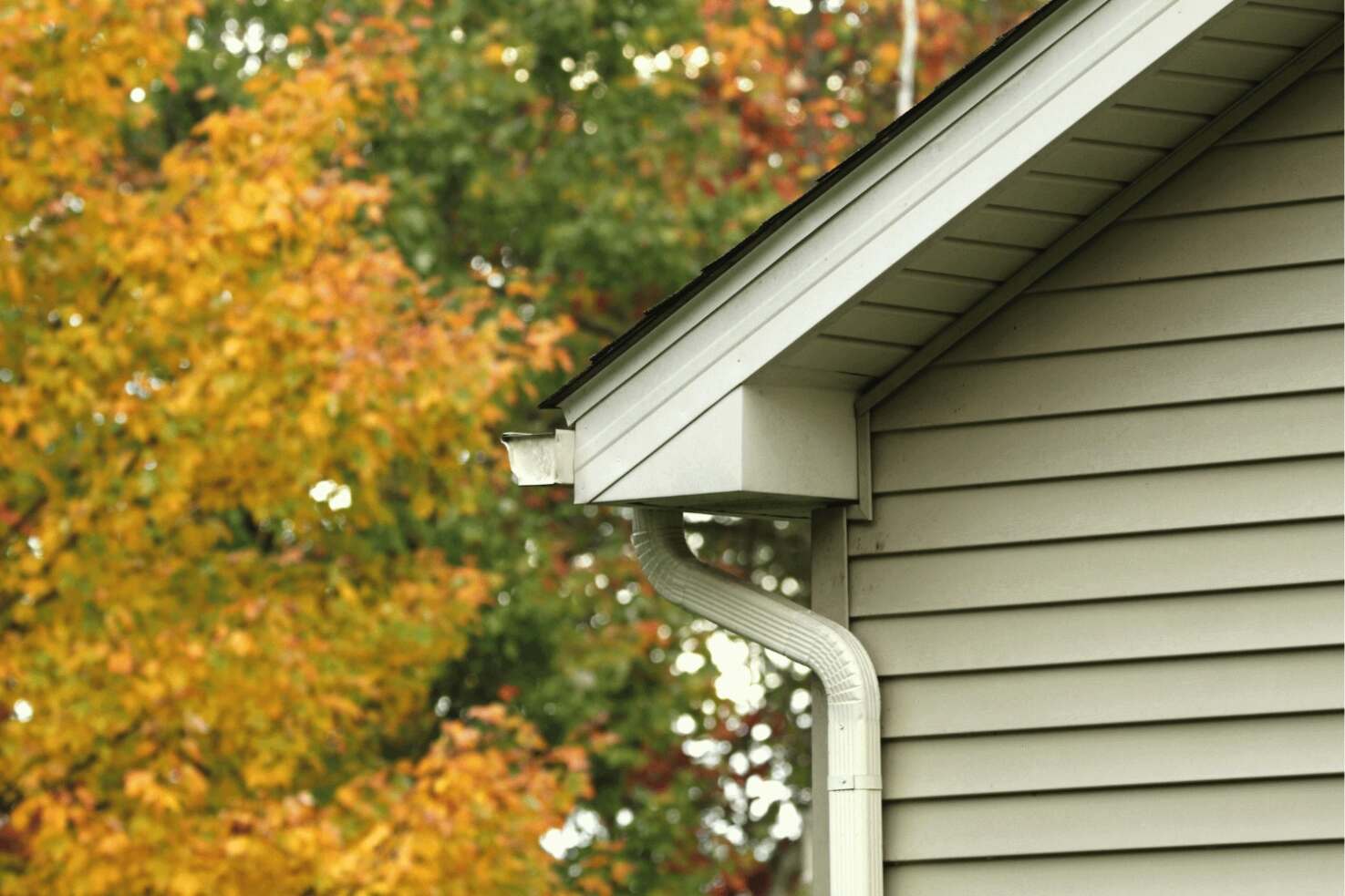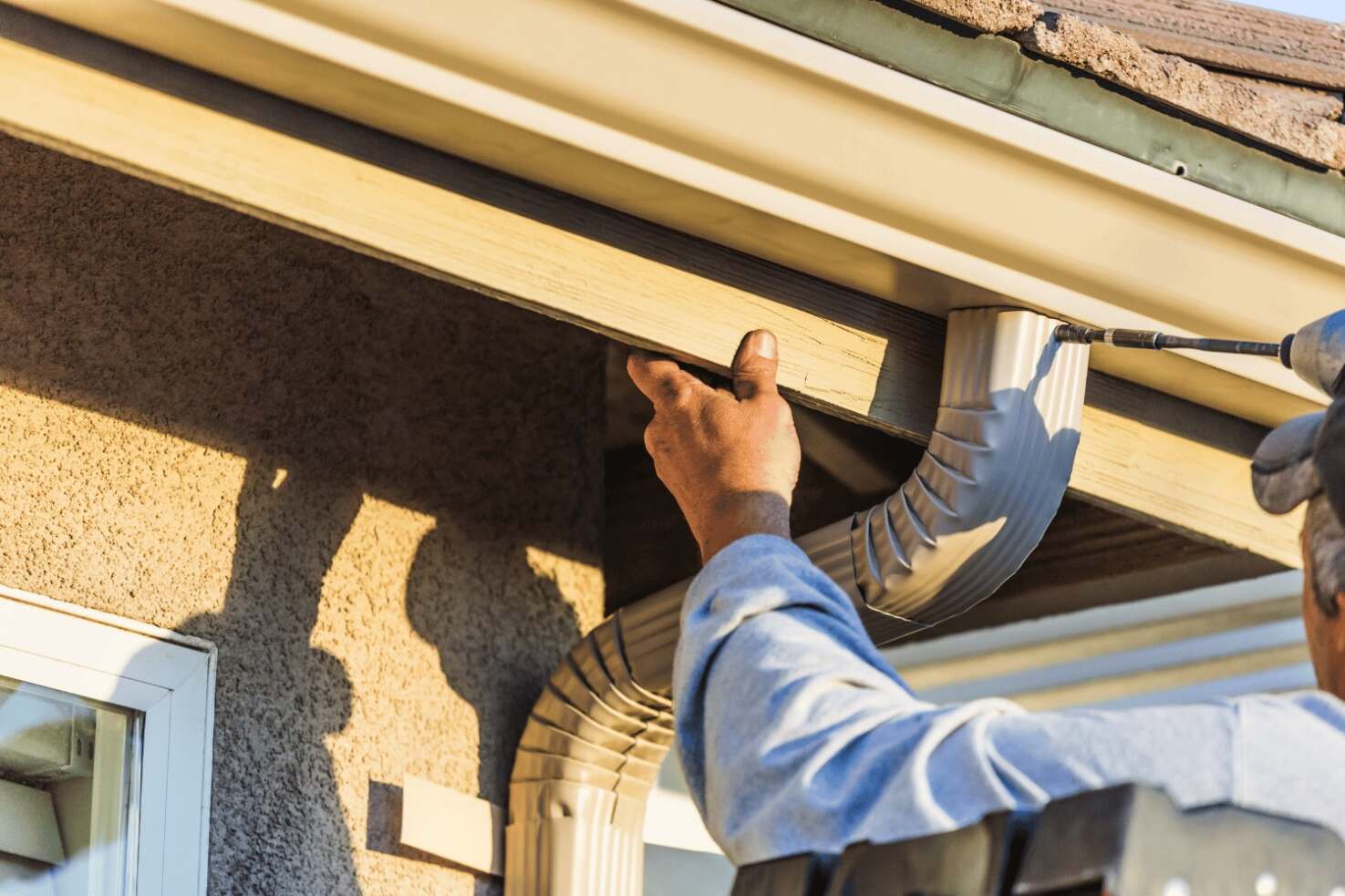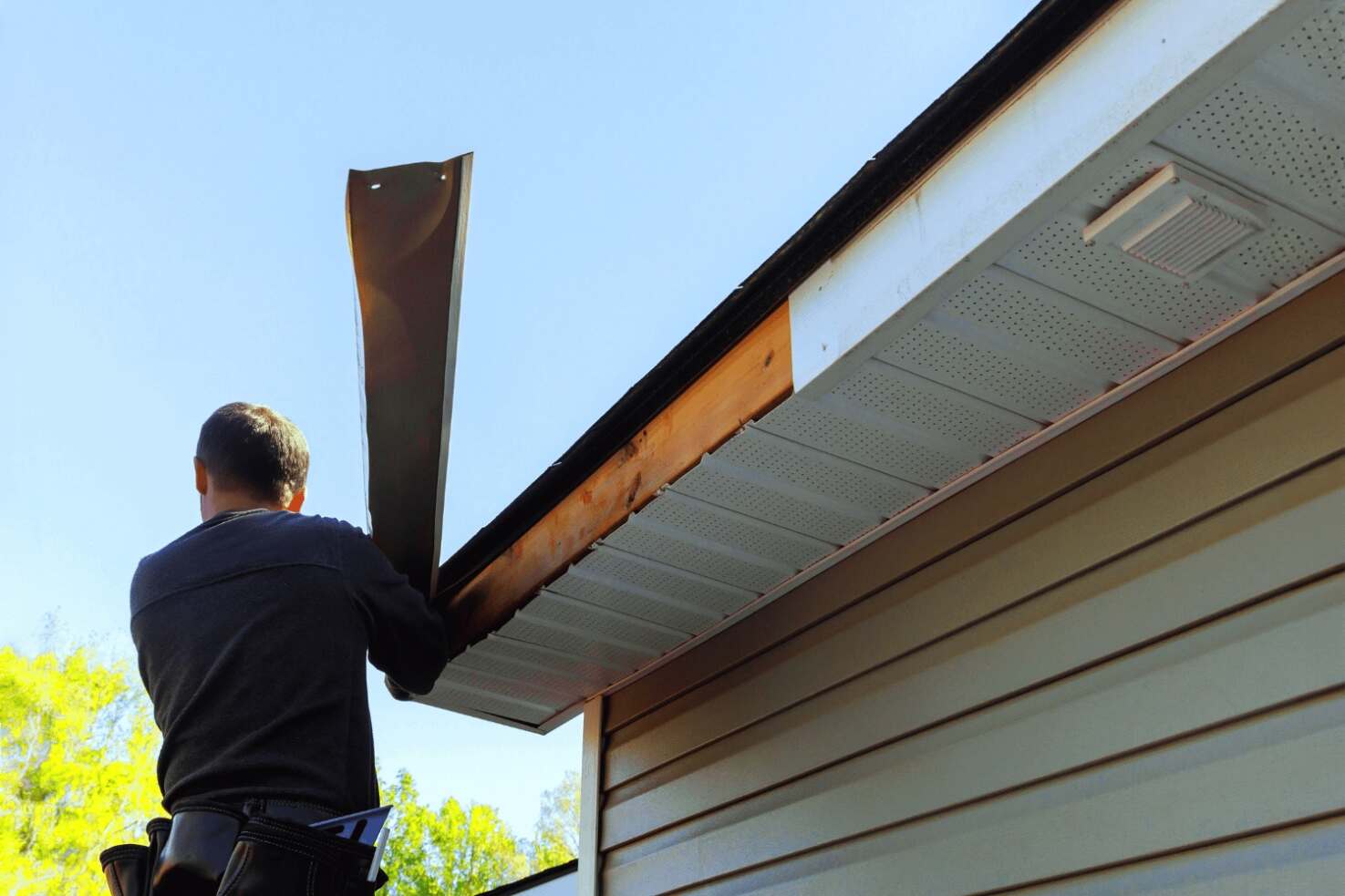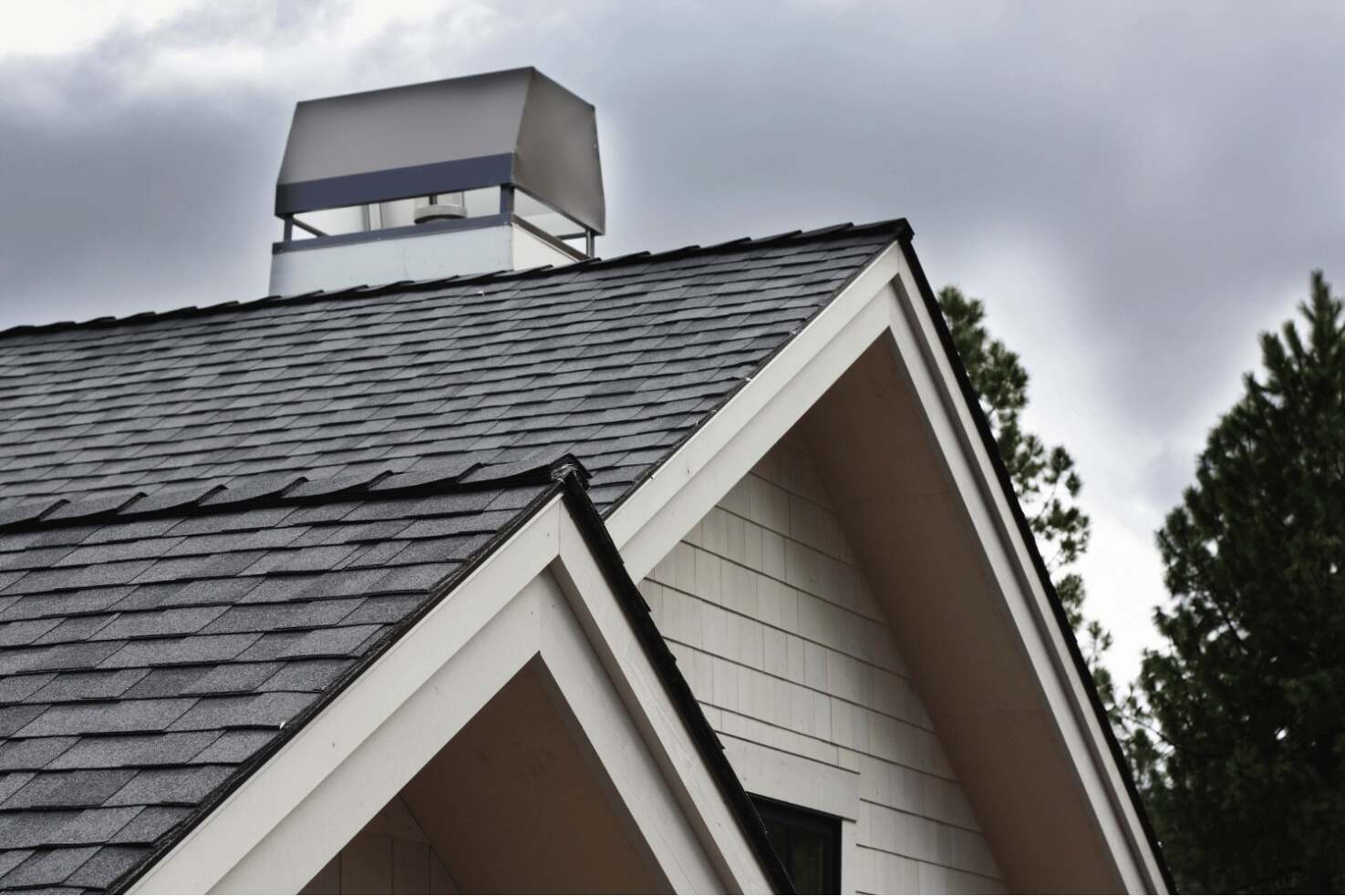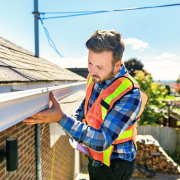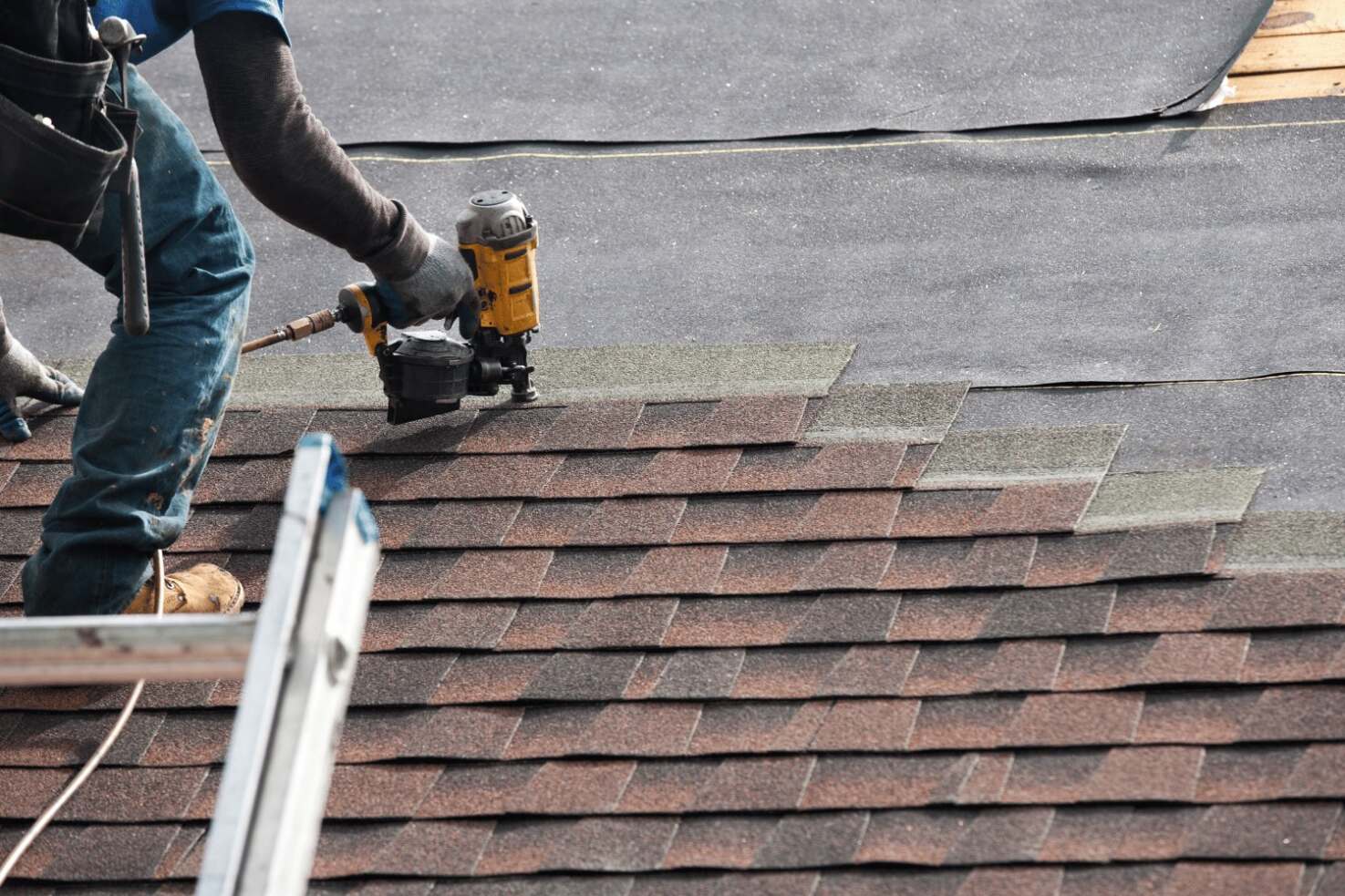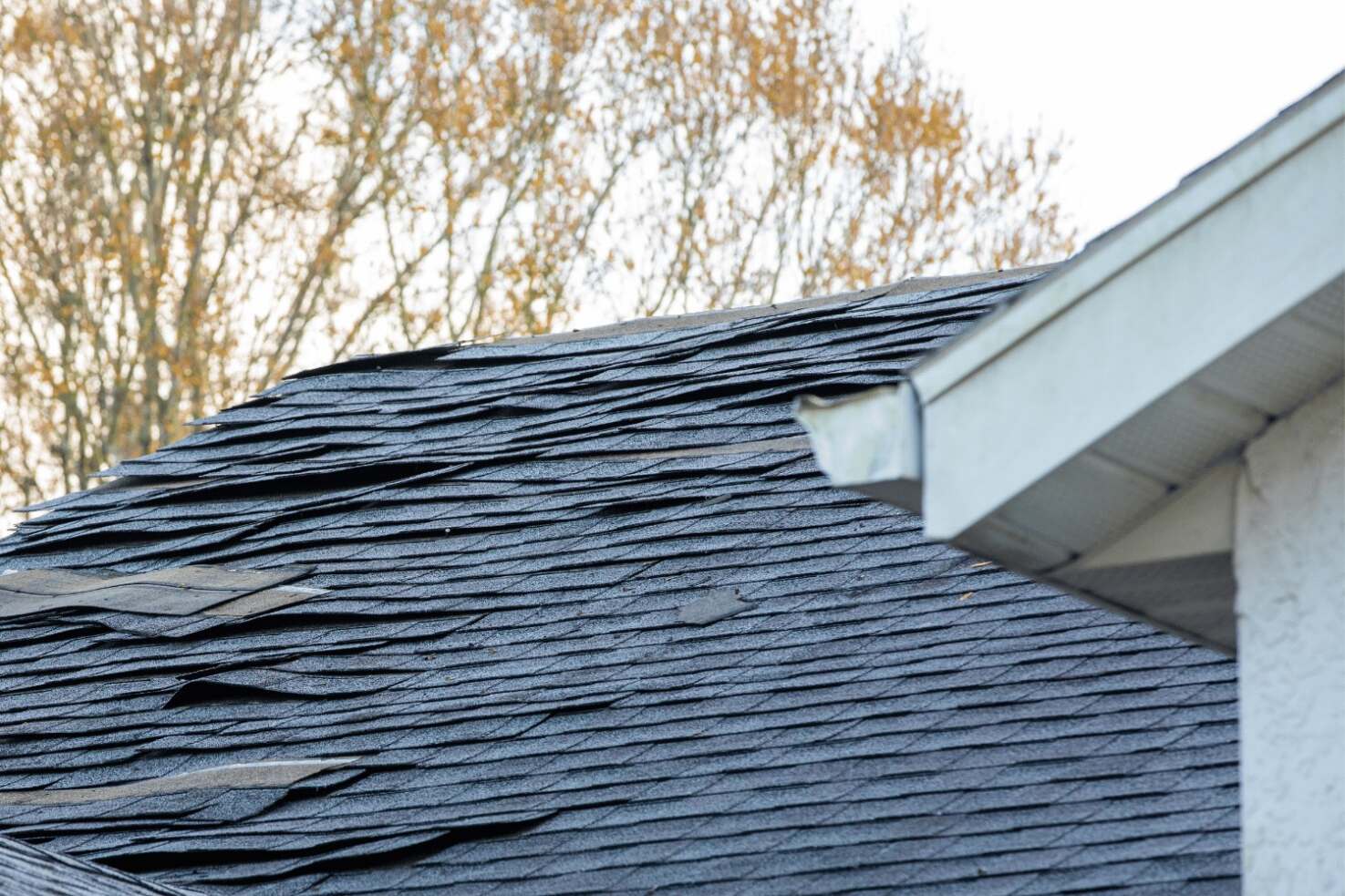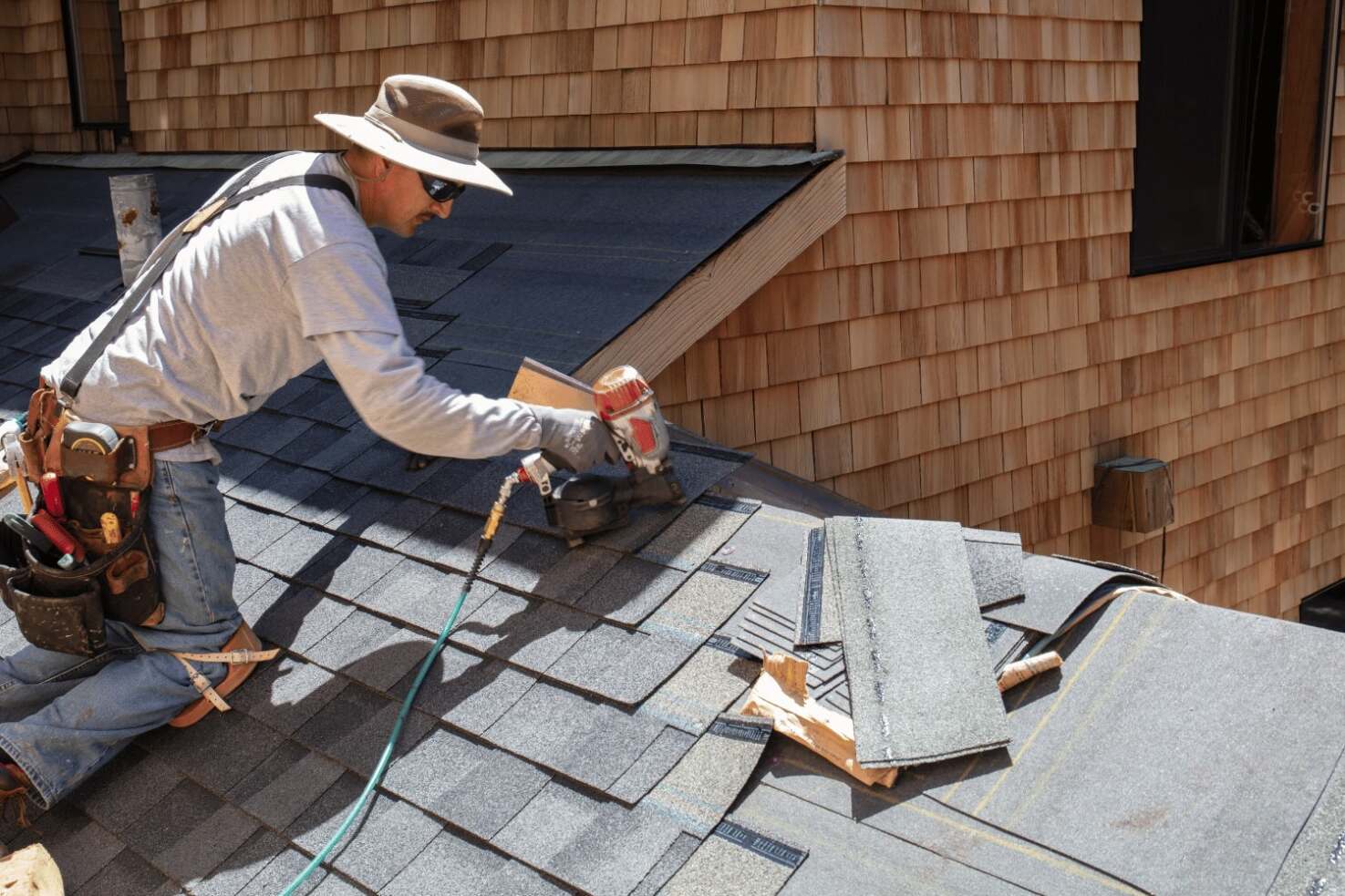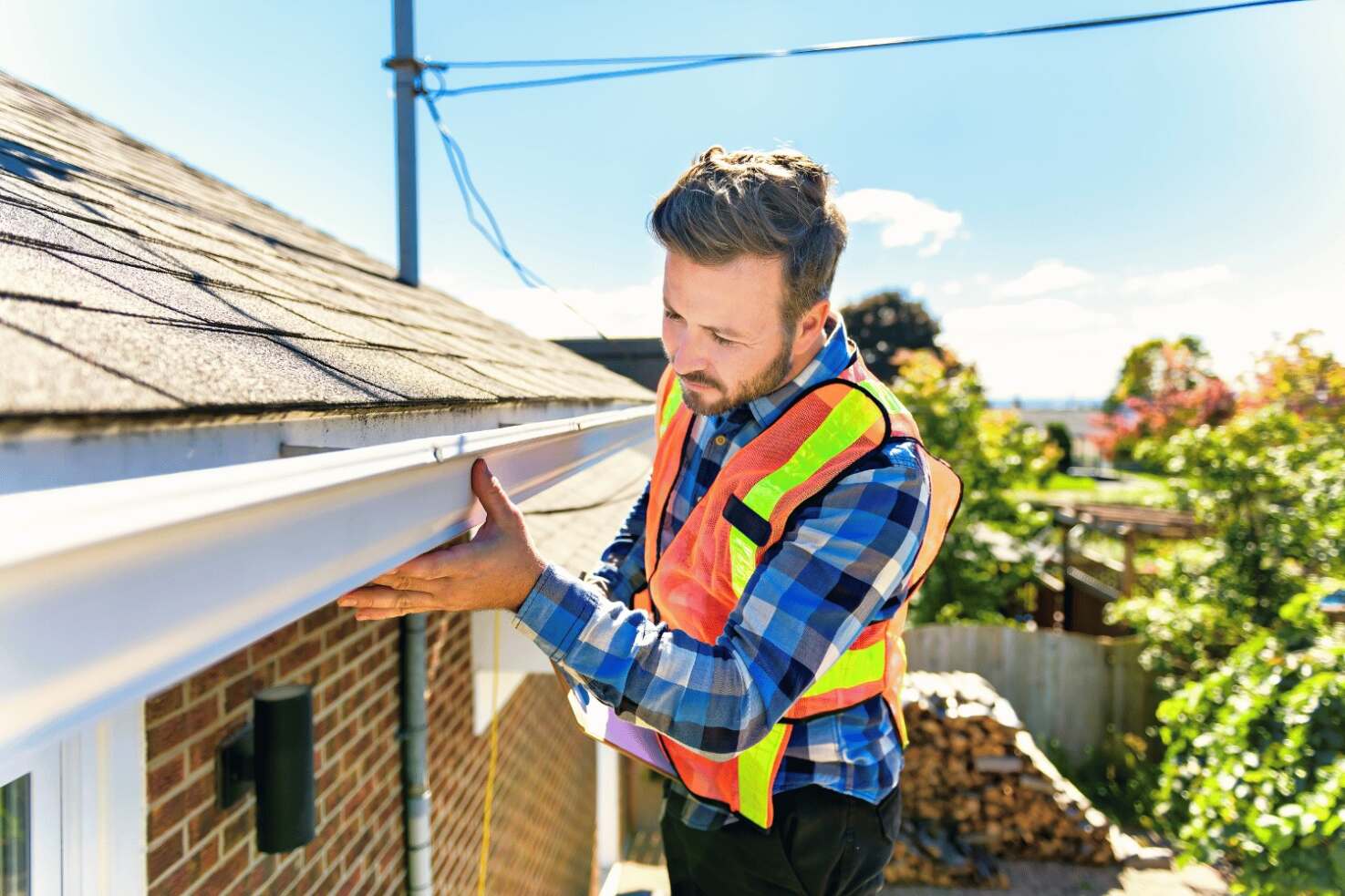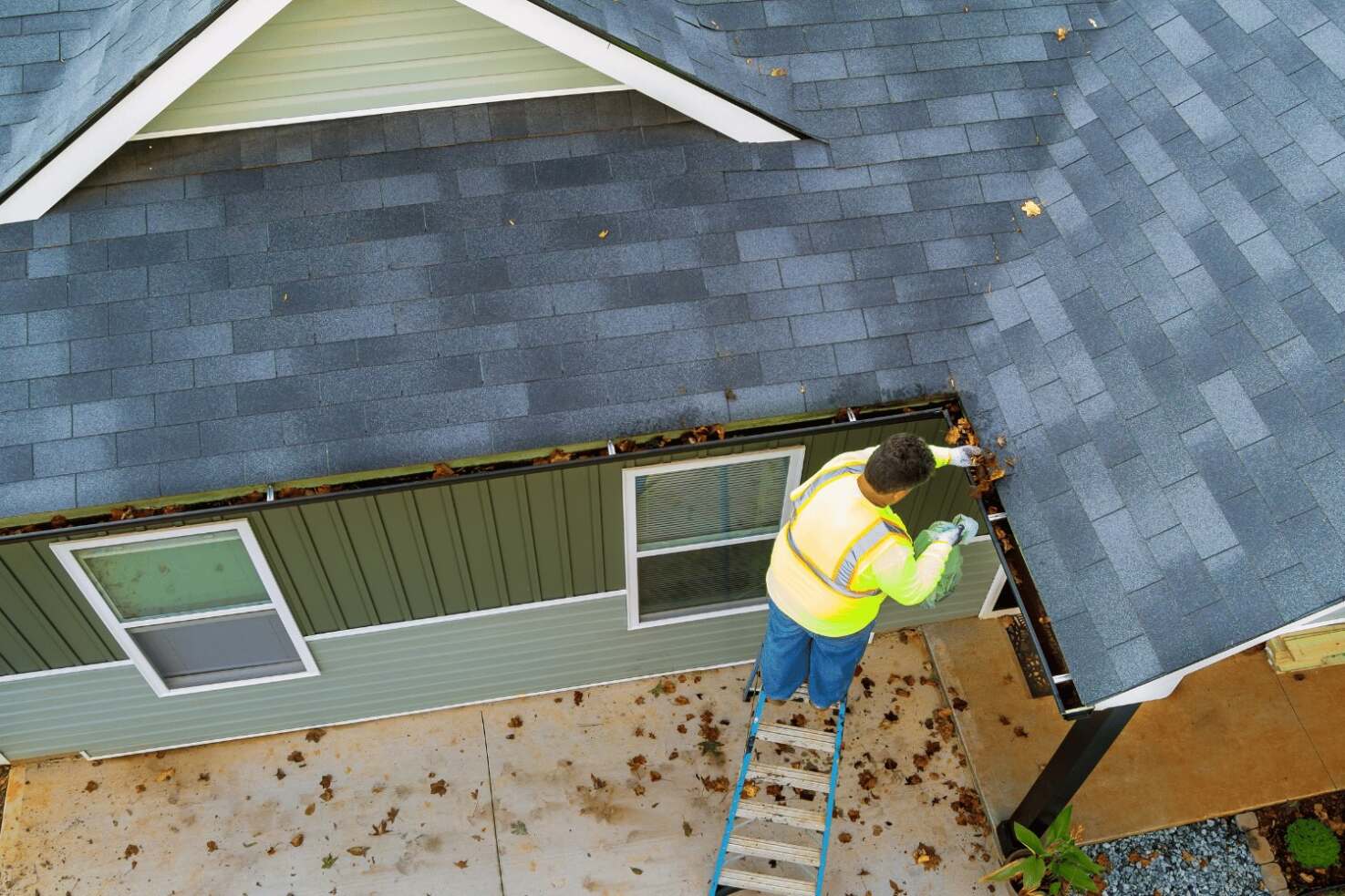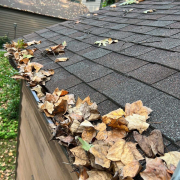Understanding the Lifetime of Asphalt Shingle Roof: What to Expect
Asphalt shingle roofs typically last between 25 and 30 years, contributing to the overall lifetime of asphalt shingle roof. In this article, we’ll cover what affects this lifespan, from material quality to maintenance. You’ll get practical tips to maximize your roof’s longevity.
Key Takeaways
-
The average lifespan of asphalt shingle roofs ranges from 25 to 30 years, with factors like material quality, installation, and maintenance affecting longevity.
-
Three types of asphalt shingles—3-tab, architectural, and luxury—offer varying lifespans and durability, with luxury shingles potentially lasting over 30 years.
-
Regular inspections, proper ventilation, and prompt repairs are essential for extending the life of an asphalt shingle roof and preventing costly damage.
Understanding the Lifetime of Asphalt Shingle Roof: What to Expect

Asphalt shingle roofs are a popular choice among homeowners due to their affordability and ease of installation. Generally, the average roof’s lifespan of an asphalt shingle roof ranges from 25 to 30 years, with some lasting even longer with proper care and maintenance. However, several factors can influence how long a roof lasts, including the quality of the roofing materials used, the installation quality, and the local weather conditions.
Imagine the peace of mind knowing your roof will protect your home through decades of storms, sun, and seasons changing. But what should you realistically expect from your asphalt shingle roof? Understanding these expectations helps you plan for maintenance and eventual replacement, ensuring your home remains secure and beautiful for years to come.
Introduction
Homeowners must understand the lifespan of asphalt shingle roofs. This significant investment requires knowledge about the roof’s age, condition, and maintenance needs, especially when buying a home.
Being informed aids in decision-making and ensures the roof’s longevity, thereby protecting the home’s value and safety.
Average Lifespan of Asphalt Shingle Roofs

The average lifespan of asphalt shingles is generally between 25 to 30 years, though some can last over half a century with proper installation and maintenance. Asphalt shingles are favored for their economic pricing and ease of installation, but their durability depends significantly on factors such as installation quality and ongoing maintenance. Manufacturers typically provide warranties ranging from 15 to 30 years, but these warranties often require registration to be valid.
Understanding the longevity of asphalt shingles requires looking at the different types: 3-tab shingles, architectural shingles, and luxury shingles. Each offers varying benefits and lifespans.
Lifespan of 3-Tab Shingles
3-tab shingles are known for their affordability and are commonly used in many homes. These shingles generally last between 15 and 20 years, providing a balance of cost and durability. While they are less expensive, their simpler design and thinner profile make them less durable than other types of asphalt shingles.
Lifespan of Architectural Shingles
Architectural shingles, also known as dimensional shingles, have an expected lifespan ranging from 25 to 30 years. They are built thicker than 3-tab shingles, which contributes to their enhanced durability and longer lifespan. This added thickness and design complexity make architectural shingles a preferred choice for homeowners looking for longevity and aesthetic appeal.
Opting for architectural shingles is an investment in your home’s future. Their durability enhances peace of mind and adds to the property’s value and curb appeal.
Lifespan of Luxury Shingles
Luxury shingles, often referred to as premium shingles, can last more than 30 years, with proper care extending their lifespan up to 50 years. These shingles are designed to withstand extreme weather conditions, with wind uplift resistance of around 110 MPH to 130 MPH. Additionally, luxury shingles are crafted to mimic the appearance of more expensive materials like cedar shake or slate, adding significant aesthetic value to high-end homes.
Luxury shingles offer a combination of longevity, resilience, and superior aesthetics, making them ideal for homeowners seeking a durable and visually appealing roof.
Key Factors Affecting Asphalt Shingle Roof Longevity

The longevity of an asphalt shingle roof depends on several key factors: the quality of materials, proper installation, weather conditions, and regular maintenance. High-quality materials and proper installation significantly extend the roof’s lifespan, while extreme weather and poor maintenance can reduce it.
By understanding these factors, homeowners can take proactive steps to maximize their roof’s life expectancy.
Quality of Roofing Materials
Material quality greatly influences an asphalt shingle roof’s durability and lifespan. High-quality materials enhance longevity, while low-quality ones reduce it. Underlayment adds extra protection and positively impacts the roof’s lifespan.
Consulting a roofing professional ensures you choose the right quality and type of materials, leading to a longer-lasting roof.
Installation Quality
A reputable roofing contractor’s proper installation ensures a durable asphalt shingle roof. Poor installation can cause leaks and shingle loss, reducing the roof’s lifespan. Workmanship warranties, typically lasting 5 to 10 years, offer some quality assurance.
Correct installation by professionals prevents many future problems, ensuring your investment in an asphalt shingle roof pays off long term.
Weather Conditions
Weather conditions significantly impact asphalt shingles’ lifespan. Abrupt temperature changes can damage shingles, while extreme weather events like high winds and heavy storms can cause cracks or tear-offs, accelerating roof degradation.
Proper ventilation mitigates weather-related issues like ice dams, which can cause water damage. Awareness of weather impacts helps in taking preventive measures to protect your roof.
Maintenance and Repairs
Regular maintenance and prompt repairs are crucial for extending an asphalt shingle roof’s lifespan. Maintenance identifies minor issues before they escalate, potentially avoiding a complete roof replacement. For instance, granules in the gutter indicate shingle degradation and should be promptly addressed.
Neglecting roof damage can lead to significant, costly issues. Regular inspections and timely repairs are essential for maintaining the roof’s condition and extending its lifespan.
Signs Your Asphalt Shingle Roof Needs Attention
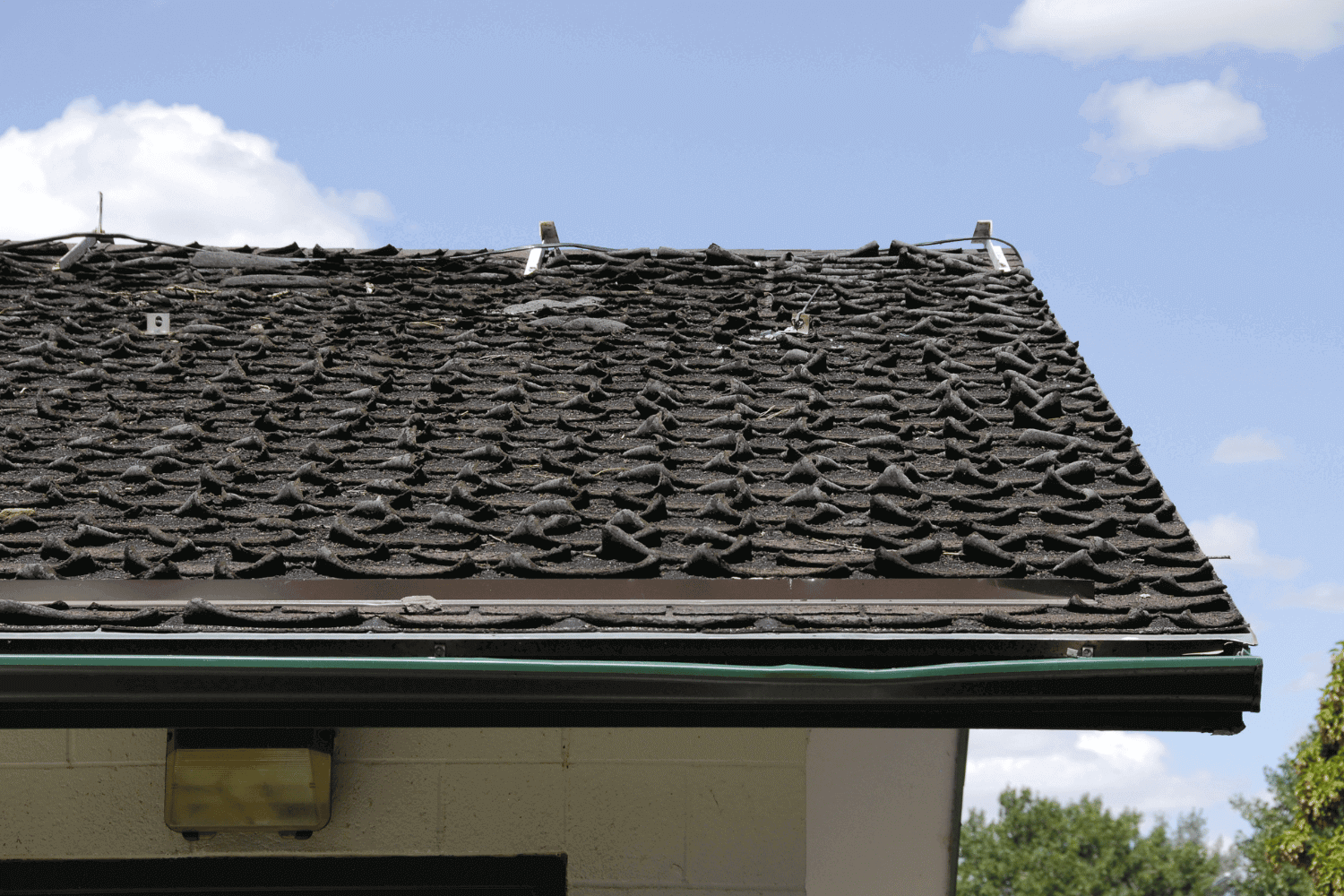
Recognizing signs that your asphalt shingle roof needs attention is crucial. Common signs include cracked or missing shingles and disarray in the asphalt coating. These indicators suggest the roof may need repair or replacement to prevent further damage.
Ignoring these signs can lead to severe problems like increased energy bills, water damage, mold growth, pest infestations, and decreased property value.
Here are some specific signs that your asphalt shingle roof needs attention.
Cracked or Missing Shingles
Cracked or missing shingles significantly compromise your asphalt shingle roof’s integrity. Hairline fractures can cause leaks and further damage. Shingles are critical for protection, and their damage or absence can compromise the entire roofing system.
Granules in Gutters
Granules in gutters can be an early warning sign of asphalt shingles deteriorating. Shingles lose granules with age due to sun exposure and weather conditions, indicating possible material failure and need for replacement.
Monitoring gutters for granules helps detect potential roofing issues early.
Sagging Roof Deck
A sagging roof deck is a severe issue requiring immediate attention. Lightly push at the spot with a broom; if it feels wet or moves, a new roof is needed immediately.
Damaged flashing can also cause water seepage, further compromising the home’s infrastructure.
How to Extend the Life of Your Asphalt Shingle Roof

Extending the life of your asphalt shingle roof involves regular maintenance and taking proactive measures. Regular inspections help identify minor issues early, preventing costly repairs later. Additionally, dark-colored roofs absorb more heat, which can lead to faster deterioration over time. Foot traffic on a roof can also contribute to physical wear, reducing its lifespan.
Arocon Roofing and Construction offers services to maintain and enhance asphalt shingles’ lifespan. Their Roof and Gutter Tune-Up includes inspections and maintenance tasks to prolong roof life.
Here are some specific practices to extend your roof’s life.
Regular Roof Inspections
Annual professional inspections identify potential issues before they become serious problems. Regular roof inspections can significantly increase asphalt shingles’ longevity by addressing minor repairs promptly and preventing extensive damage.
Proper Ventilation and Insulation
Proper ventilation and insulation are critical for maintaining the health and longevity of your asphalt shingle roof. Proper insulation prevents shingle overheating, which can shorten lifespan. Attic insulation regulates temperatures, reducing damage from contraction and expansion due to extreme weather.
Adequate attic ventilation ensures an even temperature year-round, minimizing damage from extreme heat or cold. Inadequate ventilation can cause cracked shingles, adhesive deterioration, swollen trusses, and mold, significantly reducing the roof’s lifespan.
Proper ventilation and insulation are proactive steps in maintaining your roof’s durability.
Prompt Repairs
Promptly addressing minor repairs prevents them from escalating into larger, more expensive issues. Immediate repair or replacement of damaged shingles prevents leaks and further roof damage, protecting the entire roofing system.
Quickly addressing roof repairs not only extends the roof’s life but also saves on potential high repair costs in the future.
Professional Services from Arocon Roofing and Construction
Since 2008, Arocon Roofing and Construction has provided top-notch roofing company services, focusing on quality materials and excellent customer service. They offer various services to maintain and extend the life of your asphalt shingle roof, ensuring your home remains protected and aesthetically pleasing.
Their services include the Roof and Gutter Tune-Up, involving essential maintenance tasks to keep your roof in optimal condition, and complimentary consultations for larger roofing projects to provide homeowners with expert advice tailored to their specific needs.
Roof and Gutter Tune-Up
Arocon’s Roof and Gutter Tune-Up service starts at $199 and includes essential minor maintenance tasks. This service involves repairs such as replacing up to five blown shingles, fixing deteriorated pipe gaskets, and sealing vents and flashings.
Customers receive before and after photos of the roof’s condition, ensuring transparency and peace of mind about the maintenance performed.
Complimentary Consultations
Arocon Roofing offers complimentary consultations for larger roofing projects, ensuring homeowners receive expert advice tailored to their specific needs. These consultations evaluate larger repair and replacement projects for asphalt shingle roofs, providing comprehensive insights and solutions.
Summary
In summary, understanding the lifespan of an asphalt shingle roof and the factors that affect it is crucial for homeowners. The type of shingles, quality of materials, installation quality, weather conditions, and regular maintenance all play significant roles in determining how long a roof lasts. Recognizing signs of wear and addressing them promptly can prevent costly repairs and extend the roof’s life.
By investing in regular inspections, proper ventilation and insulation, and prompt repairs, homeowners can ensure their asphalt shingle roof remains in excellent condition for many years. Professional services from companies like Arocon Roofing and Construction can provide the expertise and support needed to maintain and enhance the durability of your roof. Protect your investment and enjoy the peace of mind that comes with a well-maintained roof.
Frequently Asked Questions
What is the average lifespan of an asphalt shingle roof?
The average lifespan of an asphalt shingle roof is typically between 25 to 30 years. However, with proper installation and maintenance, some roofs can last over 50 years.
What factors affect the lifespan of an asphalt shingle roof?
The lifespan of an asphalt shingle roof is primarily influenced by the quality of materials used, the quality of the installation, prevailing weather conditions, and the frequency of maintenance and repairs. Ensuring high standards in these areas can significantly extend the roof’s longevity.
What are the signs that my asphalt shingle roof needs attention?
Your asphalt shingle roof needs attention if you notice cracked or missing shingles, granules accumulating in your gutters, or a sagging roof deck. Addressing these issues promptly can prevent further damage.
How can I extend the life of my asphalt shingle roof?
To extend the life of your asphalt shingle roof, conduct regular inspections, maintain proper ventilation and insulation, and address repairs promptly. Taking these steps will help ensure your roof remains in good condition for years to come.
What services does Arocon Roofing and Construction offer for roof maintenance?
Arocon Roofing and Construction provides roof maintenance services such as the Roof and Gutter Tune-Up and complimentary consultations for larger roofing projects. These services ensure the longevity and effectiveness of your roofing system.


